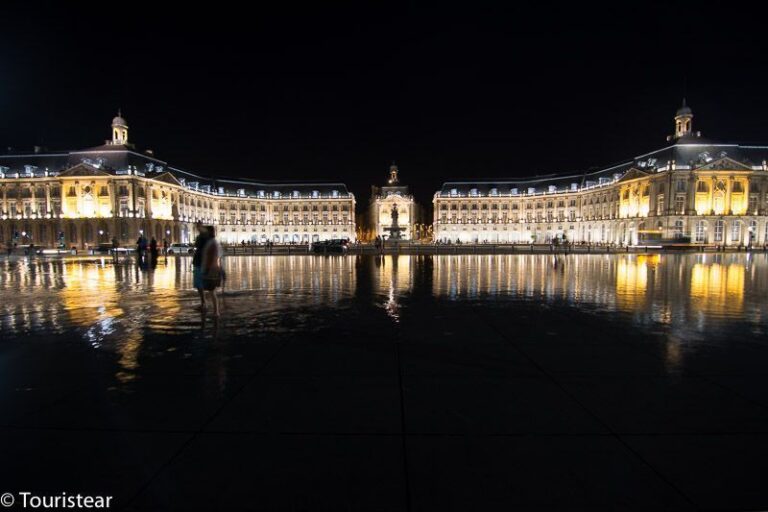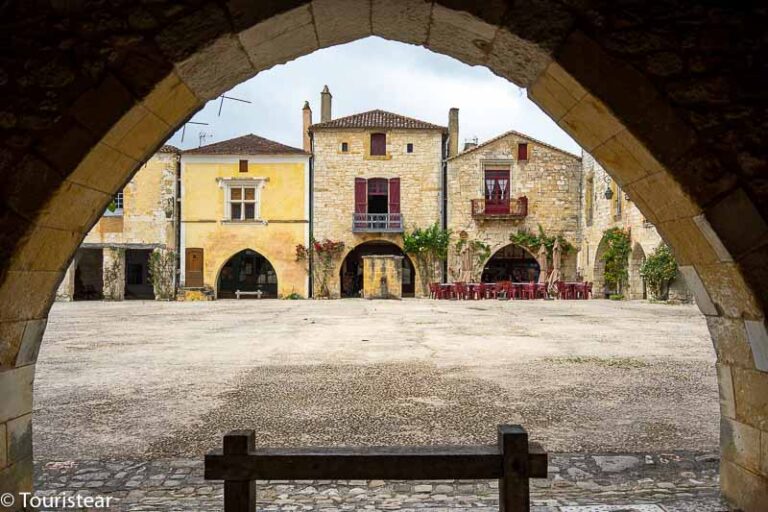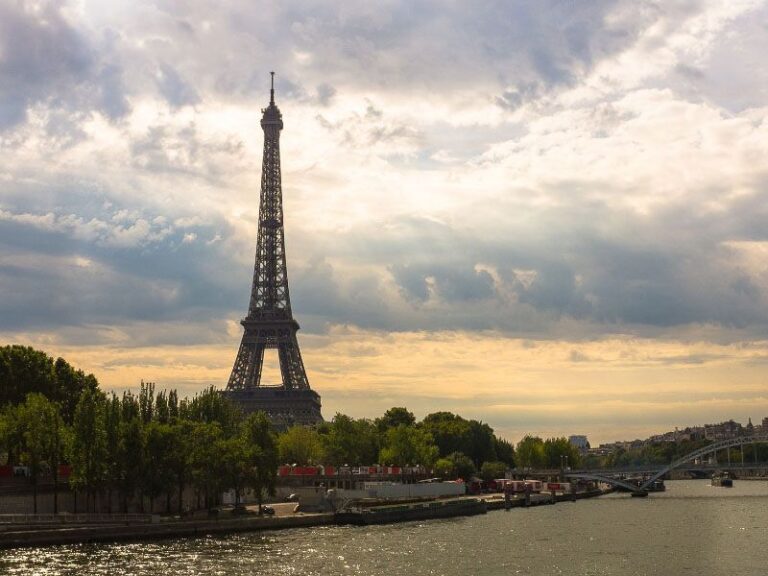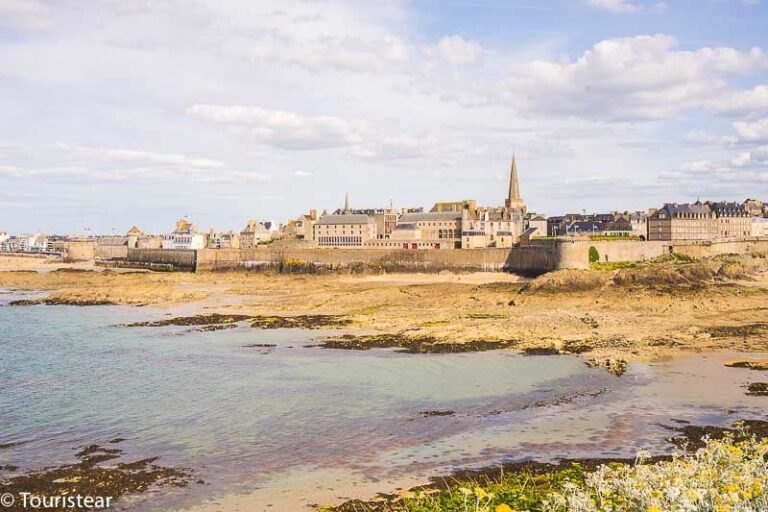Best Things to Do in and around Bergerac, Dordogne – Périgord
Bergerac is a beautiful city of the Purple Périgord, in the Dordogne. It is a small town with a fabulous medieval historical center, famous for Cyrano de Bergerac and its wines.
In today’s post, I want to tell you what to see in Bergerac and follow Cyrano’s footsteps, which are the most important places you have to visit, and what you can do in the surroundings.
- How to get from UK to France by car
- Road trip itinerary 7 days in Dordogne
- Best things to do in Sarlat
Must-Visit Places in Bergerac
- Quai Cyrano, wine, culture and tourism
- Cloister of Recoletos
- Place de la Mirpe
- The city’s museum
- Sailing in Gabarra
- The Tobacco Museum
- Follow Cyrano’s footsteps.
- Do a wine tasting
- Have a drink at one of France’s oldest bars
- Visit the Church of Notre Dame
- Visit the Church of Saint-Jacques
- Try something on the market.
- Let yourself be carried away by the narrow streets of the old town
Quai Cyrano, Culture, Wine and Tourism
In the Quai Cyrano, you’ll find the tourist office, the wine house, and the entrance to the Cloister of Recoletos.
On the ground floor, at street level, is the tourist office of the “Pays de Bergerac” (city of Bergerac and surrounding villages). Here you will find information for your visit.
I recommend you get the map “The Steps of Cyrano.” In it, you will find different walking itineraries, which will take you through the most beautiful places of Bergerac. There are 3 tours, and it is pretty well explained.
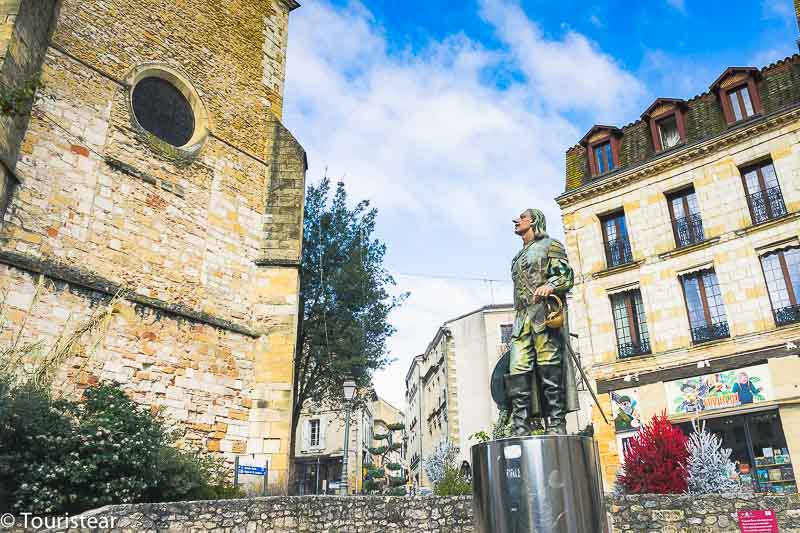
Bergerac is a wine area, and we find the wine house on the first floor of Quai Cyrano. Here, you will learn about the region’s wines and a shop to buy the one you like the most.
You will find access to the cloister on this same floor, with a terrace to enjoy wine or admire the old cloister’s architecture.
Cloister of Recoletos
The cloister was built in 1630, where Franciscan monks lived until the French Revolution. At that time, the Catholic chapel was replaced by a Protestant church.
During the summer, there are live music events.
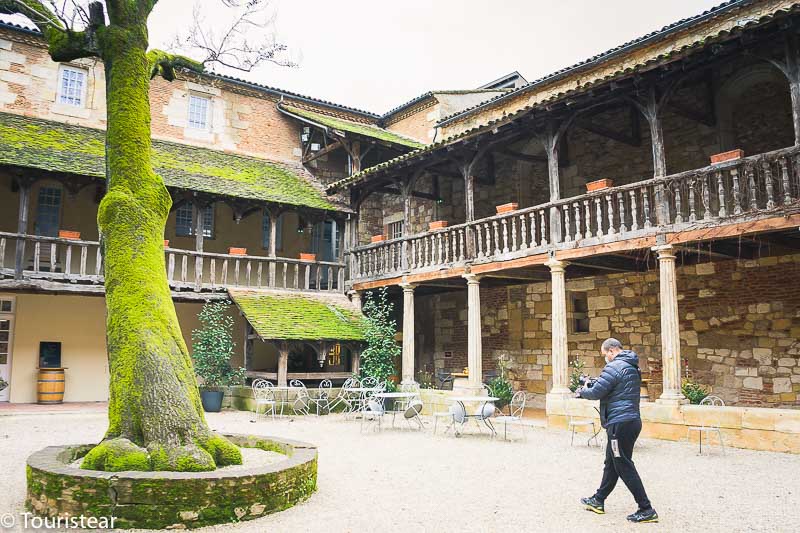
Place de la Mirpe
Place de la Mirpe is one of Bergerac’s most beautiful and picturesque squares. This is where the grain market was made, and you will find beautiful half-timbered houses and a 1977 statue of Cyrano by a sculptor from the city, Jean Varoqueau.

Follow Cyrano’s Footsteps
In 1385 Ramond de la Rivière received from King Charles VI a fiefdom located in the valley of Chevreuse in the south-end of Paris, having helped recover Bergerac by the English hand. Thus, logically, he named this area Bergerac.
300 years later, on these same lands, Hercule Savinien de Cyrano spent his childhood years. Born in Paris in 1619, he began his military career in the company of “mousquetaire Gascons,” which is, at that moment, that he takes the name Bergerac.
Later, he resumes his studies and enters the world of literature and poetry with a particular visionary and libertarian touch. His writings always range from intellectual and scientific curiosity. And he died accidentally in 1655 at the age of 36.
He, Hercule Savinien, is the one who inspired Edmond Rostand’s heroic character in 1897 when he first created “Cyrano de Bergerac” in the St. Martin’s Gate theatre.
Today, the city pays homage to Cyrano, a fictional character who never lived in Bergerac, with two statues in The Mirpe Square and one in the Plaza de la Iglesia de Santiago.
At the tourist office, ask for your map “the steps of Cyrano,” so you can tour the city, without missing anything.
The City’s Museum
In the city museum, you will find photographs, archives, and rare objects collected over time. And where you will learn about this city of art and history, from its birth to the present day.
Sailing in Gabarra
Barges are a tradition in the Dordogne. In Bergerac, they have been sailing for centuries.
If you fancy a walk on the river on one of these boats, you can do so at the “Quai Salvette” in summer. (In front of the tourist office)

It’s a 90-minute cruise; the captain will tell you about the past’s busy life when they were crucial to the wine trade and the city.
He will also tell you about the different fauna of the river and the area.
The Tobacco Museum
Bergerac has one of the last tobacco plantations in Europe. This industry may be a little controversial, but it has an exciting story.
The museum is not used to promote tobacco or is intended for smokers.
In the museum, you will learn about this crop with a more than 3000 years history as it was brought from America to Europe and its impact on the society of the seventeenth and eighteenth centuries.
You’re going to see rare artifacts and items like a tobacco bag or a pipe made by a Native American Sioux tribe.
It’s fascinating how a plant conquered the whole world.

Do a Wine Tasting
The Bergerac region has 13 appellations of origin, each with its own personality.
In this region, rosé, red, dry white, or sweet and dessert wines are produced, and it is the only one in France where a 50-50 between red and white is made.
There are a lot of castles and caves. At the end of the post, I leave you some essential visits to make in Bergerac’s surroundings and where you can taste its excellent wines.
Have a Drink at One of France’s Oldest Bars
You’ll find one of the oldest bars in France and the 30th oldest bars in Europe across the Dordogne River in the Madeleine district.
It was founded in 1822 and is listed as Historic Cafe. It’s a very regular bar, where you can meet local people.

Visit the Church of Notre-Dame
This building was built in 1865 under Paul Abadie’s plans, the Sacré Coeur architect in Paris. You can see the neo-Gothic style of this famous French architect.
Inside we can see two paintings of the Renaissance: The Adoration of the Shepherds, by Godenzio Ferrari (1484-1550) and The Adoration of the Wizards, by Licinio Regillo (1550).
In front of the church, you can see sculptor Gabriel Forestier’s monument to the dead (1927).
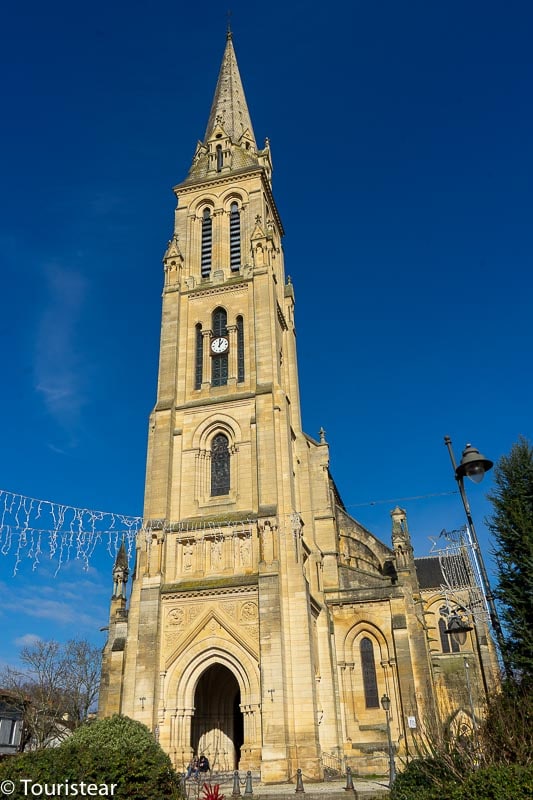
Visit the Church of Saint Jacques
The Church of Saint Jacques in French is from the thirteenth century and Romanesque style.
The first building was a 12th-century chapel and was part of the route to Compostela.
Over the centuries, the church underwent many modifications, and the nave was completely rebuilt in the eighteenth century.
In the nineteenth century, it was considered too small for its great congregation, and a new church, the church of Notre Dame, was built and consecrated in 1865. However, St Jacques, far from being abandoned, was restored.
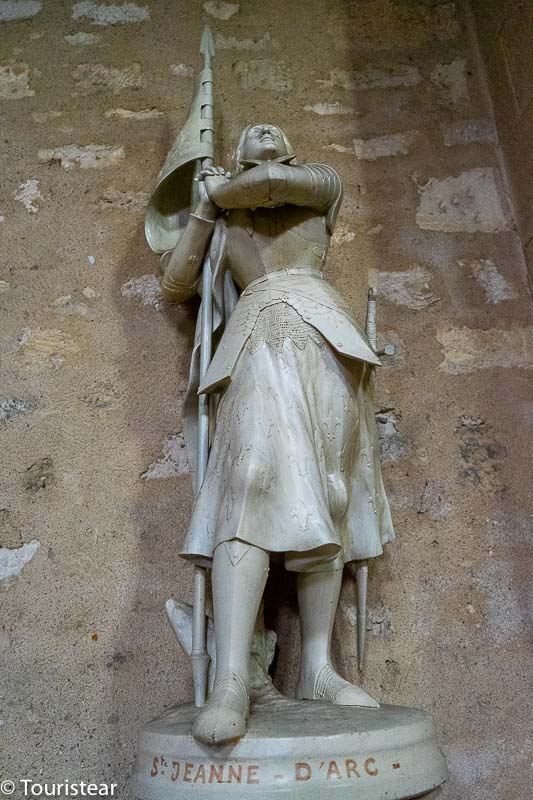
Eat Something on the Market
One of our favorite activities is to visit the local markets, we did it before we traveled in a van, but now it makes a lot more sense, hehe.
The covered market in the center of Bergerac is open from Tuesday to Saturday and is ideal for tasting local produce. Duck, truffles, strawberries, cheeses, and wine are very typical of this area.
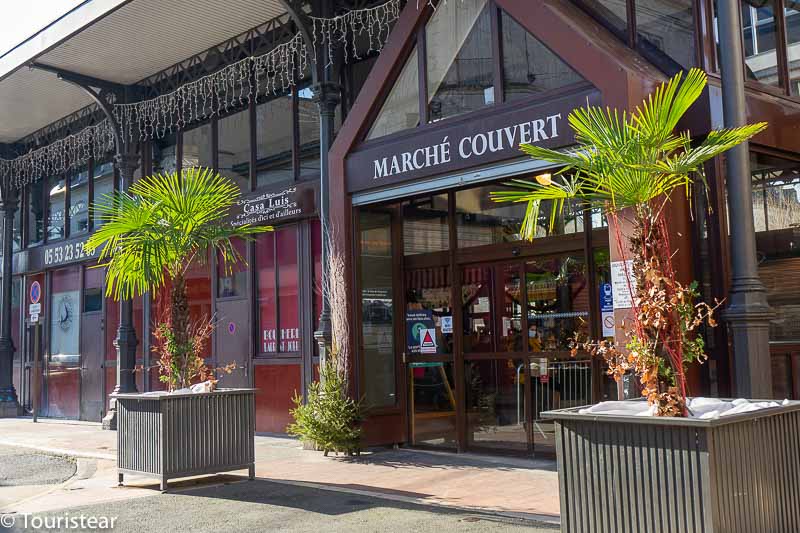
Let Yourself be Carried Away by the Narrow Streets of the Old Town
On the Dordogne River’s right bank, you will find the medieval district of Bergerac and its streets that go towards the river.
You’ll love half-timbered houses like the Maison Gaudra on the 13th-century Rue des Fontaines.
Down Rue Gaudra is “Le Cadeau,” a stream that once fed the city’s seven watermills and still operates a small hydroelectric plant that you can see on Rue des Fontaines today.
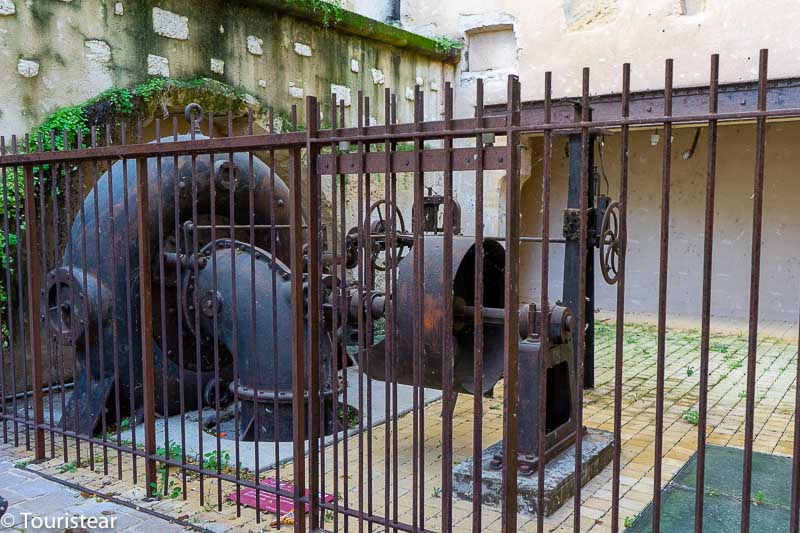
The Place Pélissiére is named after the leather and leather merchants who used to work in the square and is where you can see the Church of Saint-Jacques and the second statue of Cyrano de Bergerac.
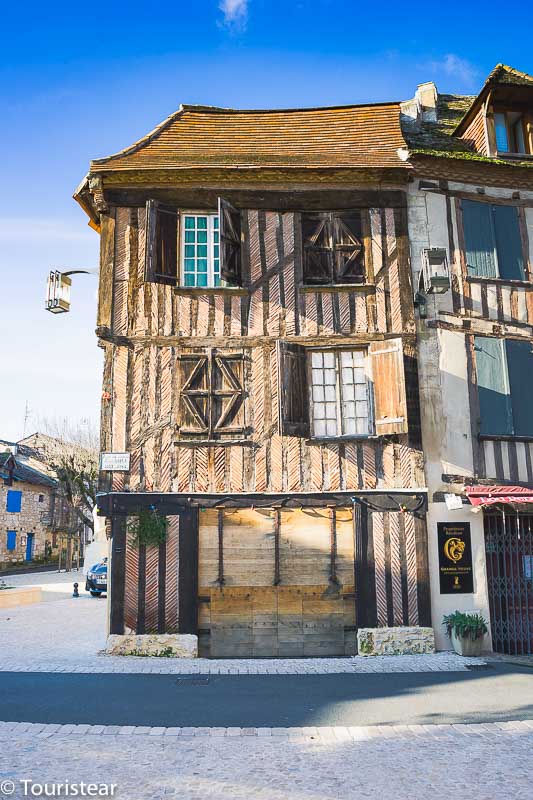
How to Get around Bergerac
The best way to get around Bergerac and the surrounding area is by car or bicycle.
The car or your own vehicle will give you a lot of freedom of movement, and you can get too many places more easily.
When it’s Best to Visit Bergerac
Bergerac is a year-round city to visit, but it is sincerely enjoyed more in spring, summer, and autumn.
In spring and autumn, the temperatures are pleasant, although you can drop a sledgehammer at any time. But there are many activities to do, such as barge rides.
The city receives the most visitors in summer, and you can find activities for all tastes. It’s a boiling time for my taste, but probably the best time to make your visit.
Where to Sleep in Bergerac
In Bergerac, you can choose between spending the night in an apartment or a hotel.
One of the hotels with the perfect value/price/location is L’Atypic Hotel Restaurant. It is ideal for couples and has all the necessary services for your stay.
Or, if you prefer, you can stay in an apartment; they are super well-priced, as you can see.
How to Get to Bergerac
Bergerac has its own international airport and receives flights regularly. However, you will most likely find the cheapest flights to Paris or Bordeaux.
- From Paris: you can go by plane or train to Bergerac. It is about three and a half hours by train, and you have to make a transfer to Bordeaux.
- From Bordeaux: you can rent a car or go by train. By train, the journey takes 1.30 h.
- From Spain: You can fly to Bordeaux and move by rental car or train from Spain, or you can get there by your own means of transport from Spain. From Bergerac to Barcelona, there is 600 km, and from Bergerac to San Sebastian, there is 350km.
What to See Near Bergerac
Visit the Vineyards of Bergerac and Duras
Bergerac is an ideal place for wine lovers. First, it’s a region you need to know. They say you never get bored on the Bergerac and Duras wine route.
They have activities designed for children and adults so that you can come home with memorable experiences.
You will find 140 “domains” zones in the Bergerac region on the wine route. This region is actively working to value its territory, its history, and the world of wine.
In summer, you’re going to find a lot of enological activities for the whole family.
Monbazillac Castle
Very close to Bergerac is the castle of Monbazillac. A historical monument of the sixteenth century with medieval and Renaissance style and beautiful views of Bergerac and the Dordogne river.
Inside it houses the museum of the vineyard and wine, as well as the museum of Protestantism.
Since 1960 this castle has been owned by the Monbazillac winery. You can make the visit free or with a guide. You can visit from the cellars to the rooms on the first floor. And, of course, do a tasting.
Issigeac
Issigeac is a small medieval village where time stopped. Here you can see 13th-century buildings where people live today. It is full of Renaissance houses and Gothic styles.
Most of the houses are half-timbered; it is best to get carried away by its medieval alleys. But first, stop by the tourist office and ask for a small plan, so you’ll always know what you see.
One of the most prominent buildings is that of the bishops of Sarlat.
Also visit the street of the sausage (rue de la Saucisse), where you will see an old trade of the thirteenth century and one of the houses that attract the most attention is that of the heads “la Maison des Tetes” of 1400, with heads carved between the wooden beams.
And if you can, it fits to visit Issigeac on Sunday, when the market is one of the liveliest in the area.
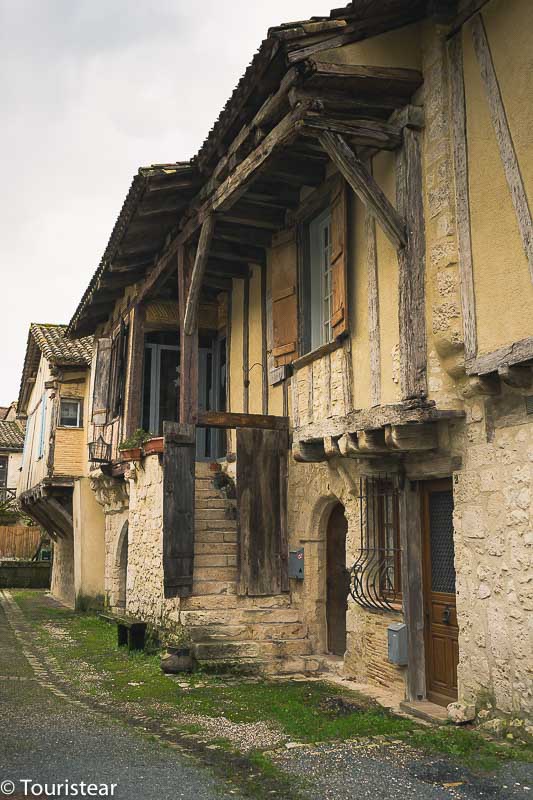
Bridoire Castle
In the heart of the vineyards of Monbazillac, you’ll find this historical monument of the fifteenth century.
You can visit the 15 furnished rooms, the dining room, billiards, the large salt flat, the underground prison, the king’s room, and the chapel.
But also, there are 100 old games for all ages. They can be played inside or outside the castle. There are giant games, armor games, crossbow shooting, ski racing, and many more. No doubt you won’t get bored.
Montaigne Castle
The Montaigne Castle is located next to Saint-Emilion, the family residence where Michel de Montaigne, a 16th-century philosopher, and writer, lived.
You can visit the tower where he wrote his essays, the luxurious castle of the nineteenth century, the gardens, and of course, taste the estate’s wine.
Maxange Grotto
Maxange’s grottoes were discovered by chance. Just over 20 years ago, Angel, a quarrier from Buisson-de Cadouin, was working to push back the front of the mine and surprise.
A fissure in the rock that catches his eye, a few days later, better prepared, investigates the rock’s fissure and makes an exceptional discovery.
“It’s an explosion of light in the bowels of the earth!” The grottoes are christened the Maxange Grottoes, which is the contraction of Maximilien, the father, and Angel, the son discovered by the grottoes.
It is also known as the grotto of the stars and is the fruit of more than 60 million years of Mother Nature.
Beaumont du Périgord
It is an ancient bastide founded in 1272. It has undergone considerable reforms over the centuries but retains impressive heritage wealth, which will cause you to transport to the Middle Ages.
Essential to visit
- The fortress church
- Luzier Gate (historical monument)
- And get lost in its alleys
Saint Avit-Sénieur
Saint Avit-Sénieur is a place to visit differently. You are ready to make an interactive tour and entertainingly discover the story.
In this way, you will learn about the people’s hectic history, the secrets of the abbey, the lives of the canons, and the legend of Avitus.
The abbey is classified as a World Heritage Site by UNESCO, be sure to visit it.

Eymet
Eymet is a bastide founded in the thirteenth century by Alphonse de Poitiers, Toulouse’s earl.
The arches in the central square can recognize the Bastidas. They were created between the 12th and 14th centuries in the South of France on the kings of France and England’s orders.
These strong villages were created to favor settlements in depopulated areas. In this post, I will tell you more in detail.
However, Eymet is a pretty lively little town with many restaurants and a small cultural scene.
Ironically, while the French were originally established as part of a defensive strategy against an English invader, it is now one of the most “British” cities in Dordogne, with a 20% British population.
Your visit to Eymet has to start at the“Place des Arcades.” Here you will see its medieval houses very well preserved.
The tourist office is located in this square, ask them for a village map to find the most interesting places to visit easily. Or you can get carried away by its narrow medieval streets.
Essential
- Eymet Castle
- La place des Arcades
- The Temple
- The Market
As you can see in Bergerac and the surrounding area, there is plenty to see and do. It is best to take the trip as organized as possible, with everything you want to visit.
But try to be realistic. It’s better to see fewer things but enjoy them, better quality than quantity.
Below you will find our posts about the Dordogne. Read them to plan your trip.
Plan your trip to the Dordogne – Périgord
- One week itinerary in Dordogne
- A practical guide to planning your trip
- What to see in Sarlat-la-Caneda
- The most beautiful villages of Dordogne Perigord
- Car rental at the best price.
Last Updated on 29 September, 2023 by Veronica
Disclosure: Some of the links on this post are affiliate links, meaning at no additional cost to you, I may earn a small commission if you click through and make a purchase.
Author: Veronica
Vero, a seasoned traveler, has explored 25 countries and lived in five, gaining a rich perspective and fostering an infectious passion for travel. With a heart full of wanderlust, Vero uncovers the world’s hidden gems and shares insights, tips, and planning advice to inspire and assist fellow adventurers. Join Vero and let the shared passion for travel create unforgettable memories.







